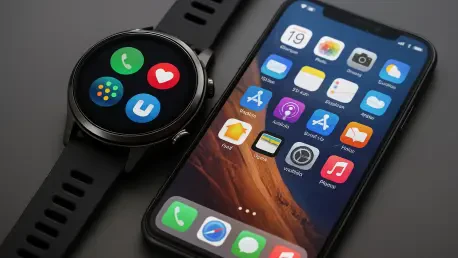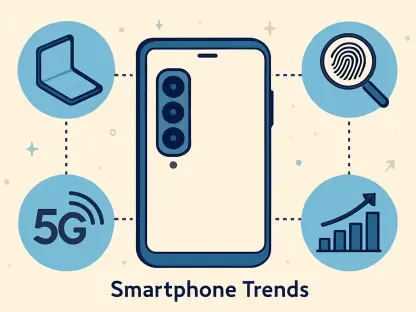In a development that could reshape the landscape of wearable technology, Apple appears to be on the verge of loosening its famously tight grip on device compatibility by potentially allowing iPhones to support third-party smartwatches. For years, Apple has built its reputation on a closed ecosystem where products like the iPhone and Apple Watch integrate seamlessly, often leaving little room for non-Apple devices to play a role. However, recent findings in the iOS 26.1 beta point to a possible shift, hinting that iPhone users might soon be able to pair their devices with smartwatches from competing brands such as Samsung or Google. This change, if implemented, could mark a significant pivot for Apple, offering unprecedented flexibility to users who have long been confined to the Apple Watch for full functionality. The implications of such a move are vast, touching on everything from consumer choice to regulatory compliance. What lies behind this potential change, and how might it impact the tech giant’s ecosystem? Let’s explore the details.
Hints of a New Era in iOS Compatibility
The excitement surrounding this potential update stems from intriguing discoveries buried deep within the iOS 26.1 beta, where code references suggest Apple is experimenting with third-party smartwatch support. Specifically, a feature dubbed “Notification Forwarding” has been uncovered, indicating that iPhone notifications could soon be relayed to non-Apple smartwatches. Alongside this, another reference to “AccessoryExtension” hints at the possibility of enabling direct pairing between iPhones and third-party wearables. While these findings are far from a confirmed rollout, they signal that Apple is at least exploring ways to break down some of the barriers that have historically defined its ecosystem. For users who have felt restricted by the lack of options beyond the Apple Watch, this glimpse into the future offers a spark of hope for greater device freedom, even as questions remain about the scope and timeline of such a feature.
It’s worth tempering enthusiasm with caution, as the presence of code in a beta version does not guarantee a public release. Apple has a track record of testing features that never see the light of day, and these particular elements remain inactive for now. The speculation around “Notification Forwarding” and “AccessoryExtension” serves more as a window into potential innovation rather than a promise of change. Additionally, there’s no clarity on whether compatibility would extend to all functions of a smartwatch or be limited to basic features like notifications. For iPhone users eager to pair their devices with a broader range of wearables, this uncertainty underscores the need to wait for official confirmation from Apple. Until then, these discoveries fuel curiosity about how far the company might go in rethinking its approach to ecosystem exclusivity.
Regulatory Forces Shaping Tech Policies
A key factor potentially driving Apple to consider third-party smartwatch support is the mounting regulatory pressure, particularly from the European Union (EU). The EU’s Digital Markets Act (DMA) has been a game-changer in pushing tech giants to foster greater interoperability between their platforms and competing products. This legislation aims to prevent companies like Apple from locking users into proprietary ecosystems, mandating changes that could include compatibility with non-Apple devices. If third-party smartwatch support does materialize, it might initially be limited to regions like the EU, where such legal frameworks are in place. This pattern aligns with other region-specific adjustments Apple has made, such as allowing third-party app stores in the EU while maintaining stricter control elsewhere. The influence of global policies on corporate strategy is evident in this scenario.
This potential regional restriction raises important considerations for iPhone users worldwide. If compatibility with third-party smartwatches is confined to areas under strict regulatory oversight, a significant portion of Apple’s customer base might miss out on the feature. Users outside the EU, for instance, could remain tethered to the Apple Watch for a fully integrated experience, highlighting a disparity in access to innovation. This situation reflects the broader challenge tech companies face in balancing compliance with varying international laws while striving to deliver a consistent user experience. The possibility of fragmented feature availability also prompts questions about how Apple might address user expectations in markets without such mandates. As regulatory landscapes continue to evolve, their impact on tech accessibility remains a critical area to watch.
Redefining the Boundaries of Apple’s Ecosystem
Apple’s ecosystem has long been a cornerstone of its success, with devices like the iPhone, iPad, and Apple Watch designed to work in perfect harmony, creating a user experience that encourages loyalty to the brand. At present, competing smartwatches from other manufacturers offer minimal to no compatibility with iOS, effectively nudging iPhone users toward Apple’s own wearable. Introducing support for third-party devices could fundamentally alter this dynamic, granting users the freedom to choose alternatives without sacrificing key functionalities like notification syncing or call alerts. While this shift might appeal to a wider audience, it also risks undermining the exclusivity that has defined Apple’s market position, posing a strategic dilemma for the company as it weighs user choice against brand cohesion.
On the other hand, such a change could serve as a bridge for users transitioning from other platforms to iOS, particularly those who already own non-Apple smartwatches and hesitate to invest in an Apple Watch. By accommodating third-party devices, Apple might attract a segment of consumers who value flexibility over ecosystem uniformity, potentially expanding its user base. However, this move could also introduce complexities, such as ensuring that third-party wearables deliver a consistent experience compared to the seamless integration of the Apple Watch. Striking a balance between opening up compatibility and preserving the polished functionality Apple is known for will be a significant challenge. How the company navigates this delicate balance could set a precedent for future ecosystem adjustments.
Industry Trends and the Push for Interoperability
The prospect of Apple supporting third-party smartwatches aligns with a larger trend in the tech industry toward openness and interoperability, driven by both consumer expectations and regulatory mandates. Users increasingly demand the ability to mix and match devices from different brands without losing functionality, a shift that challenges the traditional closed-system approach Apple has championed. While certain smartwatches, such as select Garmin models, already provide limited notification support with iOS, a broader initiative from Apple could significantly expand the range of compatible wearables. This development would not only enhance user options but also signal a potential turning point in how major tech players address ecosystem barriers, reflecting a growing acknowledgment of the need for cross-platform collaboration.
Beyond immediate user benefits, this trend toward interoperability could have ripple effects across the wearable tech market, spurring competition and innovation. If Apple moves forward with third-party support, other manufacturers might be incentivized to optimize their smartwatches for iOS compatibility, leading to a more diverse and dynamic market. This shift could also set the stage for further changes in how iPhones interact with external devices, potentially paving the way for broader ecosystem integrations in the future. The push for openness, fueled by both market forces and legal requirements, underscores a pivotal moment in tech where user freedom is becoming a central focus. As these trends unfold, Apple’s response will likely influence the direction of industry standards for years to come.
Reflecting on a Potential Shift in Strategy
Looking back, the hints of third-party smartwatch support in the iOS 26.1 beta stood as a fascinating glimpse into Apple’s possible evolution, challenging the long-held norms of its closed ecosystem. The discovery of features like “Notification Forwarding” and “AccessoryExtension” sparked discussions about a future where iPhone users could enjoy greater flexibility in their choice of wearables. While regulatory pressures, particularly from the EU, appeared to play a significant role in prompting this exploration, the uncertainty surrounding implementation and potential regional limitations tempered expectations. As the tech community reflected on this development, it became clear that Apple had been navigating a complex landscape of innovation, user demand, and legal obligations. Moving forward, stakeholders should monitor official updates from Apple for clarity on rollout plans, while exploring alternative smartwatch options that already offer partial iOS compatibility. Engaging with industry forums and policy discussions could also provide deeper insights into how such changes might shape the future of wearable technology.









